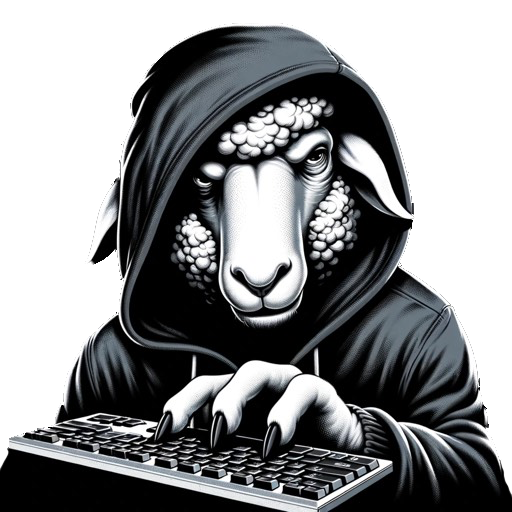In the realm of cybersecurityCybersecurity refers to the practice of protecting computers, networks, programs, and data from unauthorized access, damage, or attack. It involves a range of strategies and technologies designed to safeguard digital assets from cyber threats like hacking, viruses, and data breaches. Cybersecurity measures are essential to prevent sensitive information from being stolen or tampered with, and to ensure the smooth functioning of digital systems. This field is increasingly important in our connected world, where a lot of personal, financial, and business activities are conducted online.
See More...
See Less...
, protecting both IT (Information TechnologyInformation Technology, commonly referred to as IT, involves the use of computers, networking, and other physical devices, infrastructure, and processes to create, process, store, secure, and exchange all forms of electronic data. Typically, IT is used within the context of business operations, as opposed to technology used for personal or entertainment purposes.
See More...
See Less...
) and OTOperational Technology refers to the hardware and software used to control industrial processes, particularly in industries such as manufacturing, energy, transportation, and utilities. OT is mainly used to monitor and control physical devices and processes. Unlike IT, which focuses on computing and information systems, OT deals with the direct control or monitoring of physical operations.
See More...
See Less...
(Operational TechnologyOperational Technology refers to the hardware and software used to control industrial processes, particularly in industries such as manufacturing, energy, transportation, and utilities. OT is mainly used to monitor and control physical devices and processes. Unlike IT, which focuses on computing and information systems, OT deals with the direct control or monitoring of physical operations.
See More...
See Less...
) systems is essential. Comprehending the distinctions between these systems is vital for safeguarding them against cyber threats.
IT systems encompass traditional office computing environments and the networksA collection of interconnected computers, servers, and other devices that allow for the exchange and sharing of data and resources. Networks can be classified based on size, function, and access. Common types include Local Area Network (LAN), which connects devices in a localized area such as an office or home; Wide Area Network (WAN), which connects devices across large distances, possibly globally; and Virtual Private Network (VPN), which provides secure, encrypted connections over the internet. A network relies on standardized protocols, such as TCP/IP, to ensure uniform communication and data transfer between devices.
See More...
See Less...
that connect them, such as desktop computers, laptops, servers, and the internet. These systems support an organization's business processes and are used to store, process, and transmit information. Conversely, OT systems control and monitor physical processesIn computing, a process is an instance of a computer program that is being executed. It contains the program code and its current activity. Each process has a unique process ID and maintains its own set of resources such as memory and processor state. A process can initiate sub-processes, creating a tree of processes.
See More...
See Less...
and industrial systems, including SCADASCADA systems are used to control and monitor industrial processes. These systems are crucial for industrial organizations as they help to maintain efficiency, process data for smarter decisions, and communicate system issues to help mitigate downtime. SCADA systems are used in a variety of industrial and infrastructure processes, including water treatment, electrical power transmission, oil and gas pipelines, and railway transportation.
See More...
See Less...
(Supervisory Control and Data AcquisitionSCADA systems are used to control and monitor industrial processes. These systems are crucial for industrial organizations as they help to maintain efficiency, process data for smarter decisions, and communicate system issues to help mitigate downtime. SCADA systems are used in a variety of industrial and infrastructure processes, including water treatment, electrical power transmission, oil and gas pipelines, and railway transportation.
See More...
See Less...
) systems, PLCsA Programmable Logic Controller (PLC) is a type of computer used in industrial and manufacturing processes to control machinery and processes. It's designed for real-time use in harsh environments (like factories), with features like resistance to vibration, temperature extremes, and electrical noise. A PLC receives information from connected sensors or input devices, processes the data, and triggers outputs based on pre-programmed parameters. PLCs are used in various applications, from controlling lights and HVAC systems to running complex machinery and assembly lines.
See More...
See Less...
(Programmable Logic ControllersA Programmable Logic Controller (PLC) is a type of computer used in industrial and manufacturing processes to control machinery and processes. It's designed for real-time use in harsh environments (like factories), with features like resistance to vibration, temperature extremes, and electrical noise. A PLC receives information from connected sensors or input devices, processes the data, and triggers outputs based on pre-programmed parameters. PLCs are used in various applications, from controlling lights and HVAC systems to running complex machinery and assembly lines.
See More...
See Less...
), and DCSA Distributed Control System (DCS) is a control system used to manage complex, large-scale industrial processes across multiple locations. Unlike a PLC, which is typically used for a single machine or a small group of systems, a DCS coordinates control across various subsystems within a larger operation, such as a manufacturing plant, a chemical processing facility, or a power plant. It's characterized by its distributed nature, where control functions are spread across various subsystems but connected through a network to a central control room. DCS systems are vital for ensuring reliability, efficiency, and safety in large-scale industrial environments.
See More...
See Less...
(Distributed Control SystemsA Distributed Control System (DCS) is a control system used to manage complex, large-scale industrial processes across multiple locations. Unlike a PLC, which is typically used for a single machine or a small group of systems, a DCS coordinates control across various subsystems within a larger operation, such as a manufacturing plant, a chemical processing facility, or a power plant. It's characterized by its distributed nature, where control functions are spread across various subsystems but connected through a network to a central control room. DCS systems are vital for ensuring reliability, efficiency, and safety in large-scale industrial environments.
See More...
See Less...
). They are crucial for the safe and efficient operation of industries like manufacturing, power generation, and water treatment.
Examining the cybersecurity differences between IT and OT systems reveals the following:
Threat landscape: IT systems are usually targeted by cybercriminals looking to steal dataData, in everyday terms, refers to pieces of information stored in computers or digital systems. Think of it like entries in a digital filing system or documents saved on a computer. This includes everything from the details you enter on a website form, to the photos you take with your phone. These pieces of information are organized and stored as records in databases or as files in a storage system, allowing them to be easily accessed, managed, and used when needed.
See More...
See Less...
or disrupt business operations, while OT systems are targeted by nation-stateIn the context of cybersecurity, a nation-state refers to the involvement of national governments in cyber attacks or cyber espionage. These entities may engage in hacking to conduct espionage, influence geopolitics, or achieve strategic objectives, often using sophisticated methods and advanced technology.
See More...
See Less...
actors aiming to interfere with industrial processes or obtain sensitive information. As a result, the threats faced by IT and OT systems vary, requiring distinct protection strategies.
Security measures: IT systems are typically safeguarded by firewallsA firewall is a network security device that monitors and filters incoming and outgoing network traffic based on an organization's previously established security policies. At its most basic, a firewall is essentially a barrier between a private internal network and the public internet. Its main purpose is to prevent unauthorized access to or from the network, protecting it from attacks, malware, and other vulnerabilities.
See More...
See Less...
, intrusion detection systemsAn Intrusion Detection System is a tool or software that monitors a network or systems for malicious activity or policy violations. Any detected activity or violation is typically reported either to an administrator or collected centrally using a security information and event management (SIEM) system. An IDS is a crucial part of a comprehensive security framework, helping to detect and alert potential threats.
See More...
See Less...
, and anti-virusAnti-virus software is a program or set of programs designed to detect, search for, prevent, and remove software viruses, and other malicious software like worms, trojans, adware, and more. These tools are critical for preventing and mitigating the damage caused by such threats. Anti-virus software typically performs real-time scanning in the background to detect and block the execution of malware as it occurs, periodic scans of a file system, or both. It also often includes features like heuristic analysis to identify previously unknown viruses, as well as the ability to remove or quarantine infected files. Regular updates of virus definitions are crucial for anti-virus programs to effectively protect against newly developed malware.
See More...
See Less...
software, which protect against common cyberattacks and can be updated regularly to address new threats. OT systems, however, rely on physical securityPhysical security involves the protection of personnel, hardware, software, networks, and data from physical actions and events that could cause serious loss or damage to an enterprise, agency, or institution. This includes protection from fire, flood, natural disasters, burglary, theft, vandalism, and terrorism.
See More...
See Less...
measures like air-gapped networks, restricted control system access, and manual backups.
VulnerabilityIn cybersecurity, a vulnerability refers to a weakness in a computer system, network, or software application that can be exploited by a threat actor, such as a hacker, to gain unauthorized access or cause damage. Vulnerabilities can arise from flaws in design, implementation, or configuration of systems and software.
See More...
See Less...
: IT systems are generally more susceptible to cyber threats due to their design and internet connectivity. In contrast, OT systems are more vulnerable to physical threats such as theft, vandalism, and natural disasters.
Impact of a breachA breach, often referred to as a data breach or security breach, is an incident where confidential, protected, or sensitive information is accessed, disclosed, or taken without authorization. This can include incidents where data is stolen, copied, transmitted, viewed, or used by an individual unauthorized to do so. Data breaches can involve various types of information, including personal data, financial data, trade secrets, or any other type of information that is considered confidential. Breaches can occur for various reasons, such as hacking attacks, employee error, lost or stolen devices, or insider threats. The consequences of a data breach can be severe, including financial losses, damage to reputation, legal repercussions, and a loss of trust among customers or users.
See More...
See Less...
: While a breach in an IT system can lead to significant consequences, such as the loss of sensitive information, business operation disruptions, and reputational damage, an OT system breach can have far-reaching effects, including loss of life, environmental harm, and economic disruption.
Recognizing the unique challenges faced by IT and OT systems is essential for implementing proper security measures to protect them and minimize the impact of a breach. By understanding the differences in threat landscapes, security measures, vulnerabilities, and the consequences of breaches, organizations can safeguard both IT and OT systems against cyber threats.










